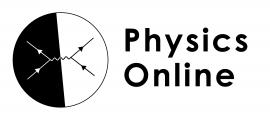Electricity
Electrostatics contains good subject matter where you have the opportunity to start simple and establish good understanding of the basics. Ensure that your students have sound definitions of all terms and quantities involved and that they are able to relate them to one another meaningfully.
The main part of this topic might as well be called elec-trickery as far as some of your students are concerned. They need to understand many things that seem counter intuitive. Often they come to the topic at GCSE with a confused understanding of the quantities involved. You need to clarify the meaning of the quantities involved and how they are all related to give the overall topic that is called electricity. You need to convince them that a battery (which is more than one cell) is needed to make the circuit work, that electricity does not flow, current does and that electricity is not used to light a lamp, energy is. Watch this video clip to help you prepare for teaching the topic.
Abstract concepts are not the only challenge in this topic, there are several equations relating p.d., current, quantity of charge, resistance, power, energy, and time that your students will have to manipulate to solve circuit problems. They will also need to analyse voltage-current graphs to determine resistance for circuit components such as lamps.
Whilst this list provides a source of information and ideas for experimental work, it is important to note that recommendations can date very quickly. Do NOT follow suggestions which conflict with current advice from CLEAPSS, SSERC or recent safety guides. eLibrary users are responsible for ensuring that any activity, including practical work, which they carry out is consistent with current regulations related to Health and Safety and that they carry an appropriate risk assessment. Further information is provided in our Health and Safety guidance.
- ALL
- Teacher guidance
- Video
- External link
Teacher guidance
Electric Circuits 11-14
Although it is stated as suitable for 11-14 ages, this is an excellent resource covering key ideas, learning challenges and suggestions for GCSE teaching. This is an extensive and thorough resource for you to use but it will take you some time to read through and so use it. Take the time to extract material that you can use.
Electricity and Magnetism 11-14
Although it is stated as 11-14, this is an excellent resource covering key ideas, learning challenges and suggetsions for GCSE teaching. This is an extensive and thorough resource for you to use but it will take you some time to read through and so use it. Go straight to the narrative and teaching approaches files to select material to use. The narrative on Getting to grips with voltage is recommended. Try out the sequence of practical activities as suggested.
Electricity
This resource covers analogies that you can use to help your students understand what is happening in a circuit. It has lesson plans and worksheets that you can use and adapt.
Episode 101: Introduction to Circuits
Use the suggestions in this resource to build confidence with your students. Get them to set up circuits and to explain what is happening in the circuits. Also being able to use a multimeter correctly as an alternative to separate ammeters and voltmeters is useful.
Note: Although this is tagged as a resource for A level students, this is all relevant for the current GCSE
Episode 109: Electrical Characteristics
Produced by the Institute of Physics, in this practical investigation students measure the current and voltage characteristics for several components and identify ohmic and non-ohmic behaviour. Students determine the V-I characteristics for: a carbon resistor, semiconductor diode and a filament lamp
Science Teaching Units (Key Stages Three to Four)
A scheme of work based on the research from the team at the University of Leeds that aims to provide a logical, coherent approach to teaching several topics including 'Explaining how electric circuits work' and Voltage, energy and power in electric circuits'. You may not want to follow it all but well worth a look to see how they have approached it.
Video
Electric sausage
This video clip shows you the sort of fun demonstrations and student practicals that are possible with electrostatics. You must research the possibilities and put your own collection together. Props you need often include insulator rods, balloons, feathers and strips of polythene bag.
Flying Tinsel
Here’s another electrostatic trick, levitation. The video is themed on Christmas, but all you need is a balloon and a strip of thin polythene bag to do the trick so you don’t have to wait until the festive season to show it.
Demonstrating Physics: Electrostatics
In this Demonstrating Physics video clip a biology specialist is supported to use a Van de Graaff Generator. This teacher then demonstrates the experiment to a class of Year 11 students.
Van de Graaff generator
This second film on the Van de Graaff generator is included as the operation of the generator is explained and some extra tips are given.
Characteristics of a wire
A pair of videos that investigates the Ohm’s law relationship. The first allows students to carry out an experiment on the IV characteristics of a wire (Ohm's law) from home. This is a required practical for students to understand and be able to carry out for GCSE Combined Science and Physics. The second explains how to interpret the data, plot the graph and determine if there is a relationship between voltage and current in a wire.
Charging an insulator by friction
A short video that demonstrates how to investigate the charge of different insulators due to friction.
IV Characteristics of a bulb
A pair of videos that investigates the IV characteristics of a filament bulb. The first allows students observe the experiment, which is a required practical for students to be able to understand and carry out for GCSE Combined Science and Physics. The second explains how to interpret the data, plot the graph and determine if there is a relationship between voltage and current.
IV Characteristics of a diode
A pair of videos that investigates the IV characteristics of a diode. The first allows students observe the experiment, which is a required practical for students to be able to understand and carry out for GCSE Combined Science and Physics. The second explains how to interpret the data, plot the graph and determine if there is a relationship between voltage and current.
IV Characteristics of a resistor
A pair of videos that investigates the IV characteristics of a resistor. The first allows students observe the experiment, which is a required practical for students to be able to understand and carry out for GCSE Combined Science and Physics. The second explains how to interpret the data, plot the graph and determine if there is a relationship between voltage and current.
Lamps in series and parallel
A pair of videos that investigates the characteristics of lamps in series and parallel circuits. This first video allows students to carry out the experiment and the second reviews the results. This is a required practical for students to be able to understand and carry out for GCSE Combined Science and Physics.
Resistance of a wire
Two videos investigating the resistance of a wire. The first video allows students to carry out an experiment on the resistance of a length of wire from home and the second evaluates the results by drawing a graph. This is a required practical students to be able to understand and carry out for GCSE Combined Science and Physics.
Resistors in series and parallel
Two videos for investigating resistance in series and parallel circuits. The first video demonstrates the experiment to measure voltage and current, and the second calculates the resistance values. This is a required practical for students to be able to understand and carry out for GCSE Combined Science and Physics.
External link
Diagnostic Questions *suitable for home teaching*
Good, diagnostic questions can be very valuable to assess student understanding at the beginning, during of after any teaching sequence. The EPSE project from the University of York project produced a number of questions which can be used to elicit students’ initial ideas.
Electric Fields Practical Ideas
This shows the shape of electric fields, in much the same way that magnetic fields are demonstrated with iron filings. An experiment apparatus and materials list, health and safety notes are included along with the procedure.
PhET Ohm's Law *suitable for home teaching*
An interactive simulation that helps the user visualise how changing one Voltage or Resistance affects Current.








